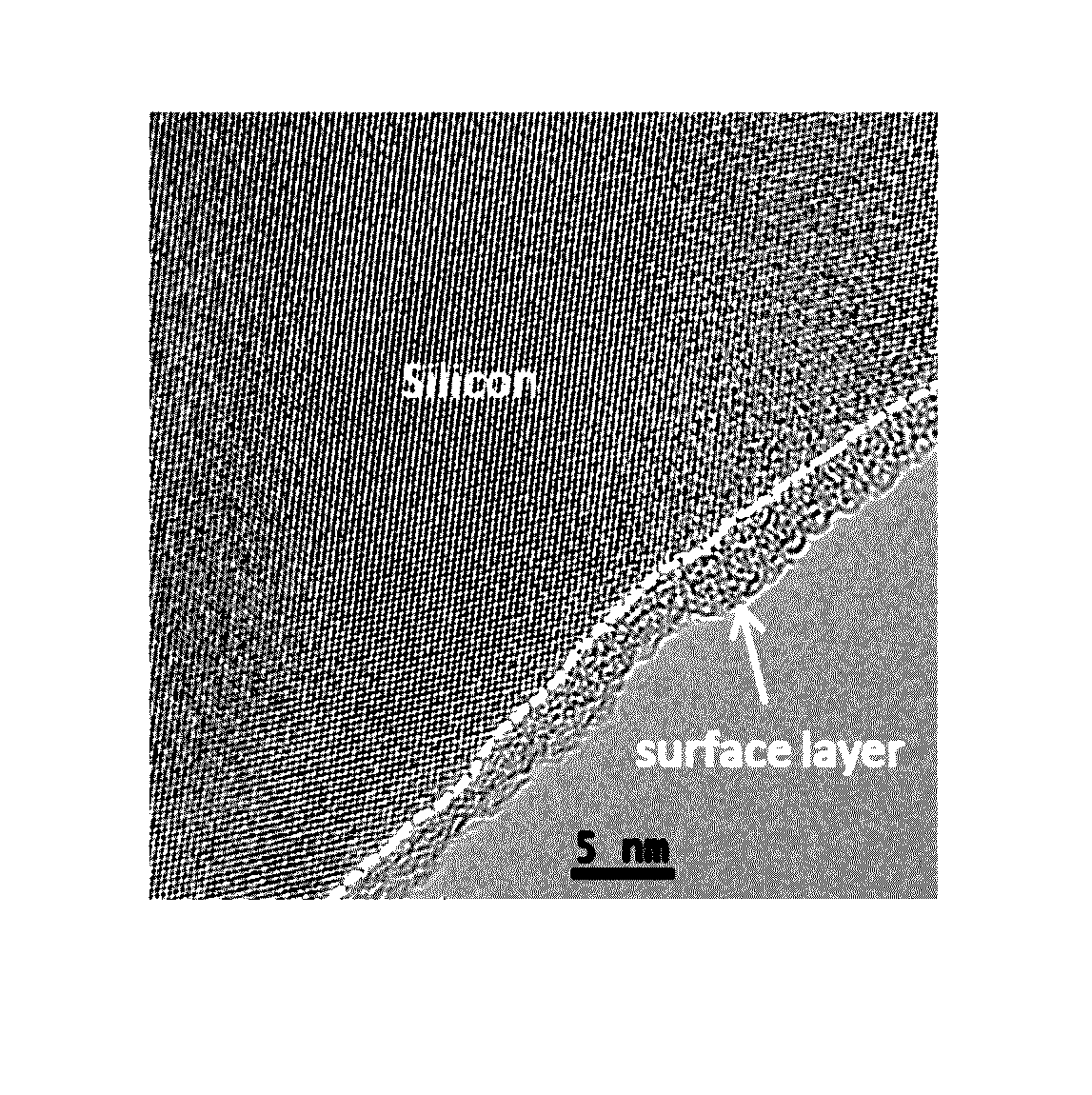Negative electrode active material for nonaqueous electrolyte secondary batteries
a secondary battery and active material technology, applied in the direction of active material electrodes, sustainable manufacturing/processing, climate sustainability, etc., can solve the problems of low electron conductivity, silicon-based active materials, and active materials that have already reached the theoretical limit in terms of capacity, and achieve excellent reactivity, high dispersibility, and enhanced cycle characteristics of batteries
- Summary
- Abstract
- Description
- Claims
- Application Information
AI Technical Summary
Benefits of technology
Problems solved by technology
Method used
Image
Examples
example 1
(1) Production of Negative Electrode Active Material
[0134]An ingot of silicon (Si) was heated to melt, and the molten liquid that had been heated to 1600° C. was subjected to steam explosion atomization using the apparatus described in FIG. 2 of WO 01 / 081033. At this time, the inner diameter of the cylindrical mixing nozzle 2 was set to 2.0 mm, and the amount of the coolant circulating in the mixing nozzle was set to 100 L / min. Water at room temperature was used as the coolant. A molten liquid of silicon was dropped (free-fall dropping) into the mixing nozzle 2 in an amount of 13 g each. The cooling rate at this time was estimated to be 106 K / s to 108 K / s according to the estimation method described above.
[0135]The silicon powder obtained by the steam explosion atomization was further subjected to particle size adjustment using a jet mill pulverizer in a nitrogen atmosphere (air in an amount of less than 1%, the balance being nitrogen vaporized from liquefied nitrogen (purity 99.999...
example 2
[0144]A fine silicon powder was produced in the same manner as in Example 1. However, a silicon fine powder of a production lot different from that of Example 1 was employed. The impurities content of this fine silicon powder was the same as that of the fine silicon powder of Example 1; however, the amount of surface water (200° C. to 300° C.) was 17 ppm, the specific surface area of the fine silicon powder was 2.4 m2 / g, and the amount of surface water per unit specific surface area (200° C. to 300° C.) was 6.9 ppm / (m2 / g).
[0145]Then, a surface-treated silicon powder (negative electrode active material), a negative electrode mixture, and a negative electrode were produced in the same manner as in Example 1, except that in the process of the surface coating treatment, 2-aminopropyltriethoxysilane was used as the surface treatment agent.
[0146]The D50 of the surface-treated silicon powder at this time was 3.5 μm.
[0147]For the negative electrode obtained as described above, the active ma...
example 3
[0149]A fine silicon powder of the same production lot as that of Example 2 was employed. A surface-treated silicon powder (negative electrode active material), a negative electrode mixture, and a negative electrode were produced in the same manner as in Example 1, except that in the process of the surface coating treatment, 2-aminopropyltriethoxysilane was used as the surface treatment agent, while the number of parts added thereof was adjusted to 2.0 parts by weight, and ethanol was used as the solvent, while the number of parts added thereof was adjusted to 2.8 parts by weight. The D50 of the surface-treated silicon powder at this time was 3.7 μm.
[0150]For the negative electrode obtained as described above, the active material particles in a vertical cross-section of the active material layer were observed with a transmission electron microscope (JEM-ARM200F manufactured by JEOL, Ltd.), and partial presence of a surface layer having a thickness of 7 nm on the surface of particles...
PUM
| Property | Measurement | Unit |
|---|---|---|
| particle size distribution analysis | aaaaa | aaaaa |
| temperature | aaaaa | aaaaa |
| thickness | aaaaa | aaaaa |
Abstract
Description
Claims
Application Information
 Login to View More
Login to View More - R&D
- Intellectual Property
- Life Sciences
- Materials
- Tech Scout
- Unparalleled Data Quality
- Higher Quality Content
- 60% Fewer Hallucinations
Browse by: Latest US Patents, China's latest patents, Technical Efficacy Thesaurus, Application Domain, Technology Topic, Popular Technical Reports.
© 2025 PatSnap. All rights reserved.Legal|Privacy policy|Modern Slavery Act Transparency Statement|Sitemap|About US| Contact US: help@patsnap.com


